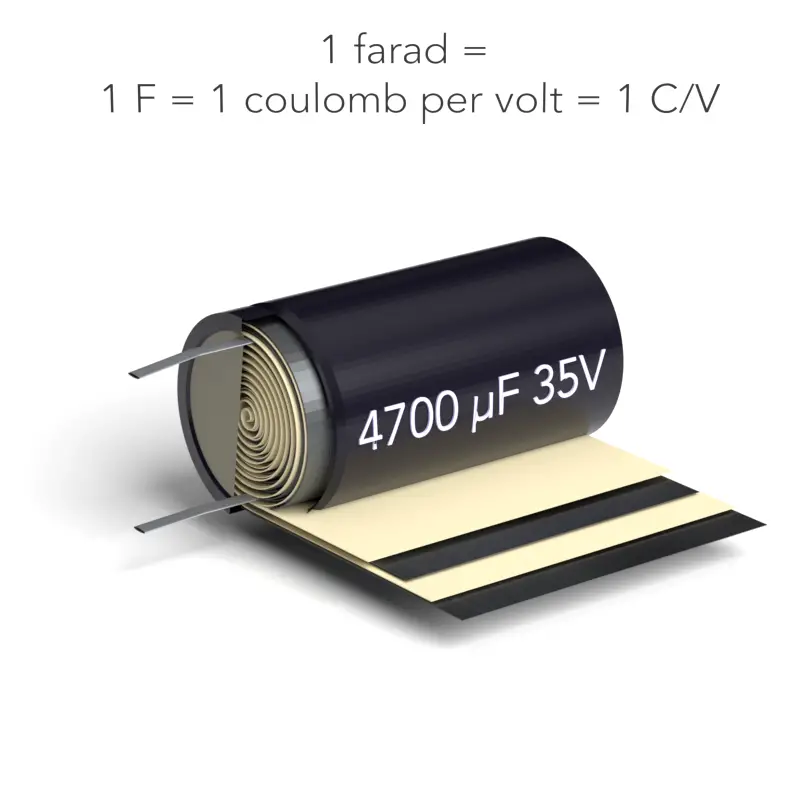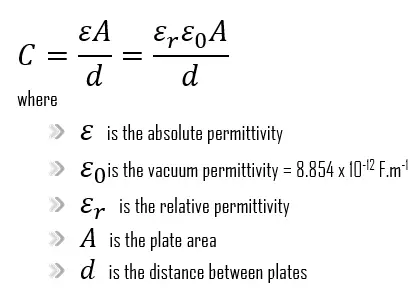Capacitance
Capacitance is defined as the ability to store an electric charge and is symbolized by the capital letter C. Any two conductors separated by an insulator (or a vacuum) form a capacitor. Commonly recognized are two closely related notions of capacitance: self-capacitance and mutual capacitance.
Farad – Unit of Capacitance
The SI unit of capacitance is the coulomb per volt. This unit occurs so often that it is given a special name, the farad (F).

1 farad = 1 F = 1 coulomb per volt = 1 C/V
As you will see, the farad is a very large unit. Submultiples of the farad, such as the microfarad and the picofarad, are more convenient units in practice. For example, the capacitance of flat, parallel metallic plates of area A and separation d is given by the expression below:

As can be seen, the permittivity is often represented by the relative permittivity εr or κ which is the ratio of the absolute permittivity ε and the vacuum permittivity ε0.
εr = κ = ε/ε0
One Farad
One farad of capacitance is a relatively large unit of capacitance, and it is not commonly found in most electronic circuits. A capacitor with a capacitance of one farad can store one coulomb (C) of charge per volt of potential difference between its plates.
To give you an idea of how large one farad is, consider the following examples:
- A typical small ceramic capacitor used in electronics might have a capacitance of around 0.1 microfarads (µF), which is one ten-millionth of a farad.
- A typical electrolytic capacitor used in power supply circuits might have a capacitance of a few hundred or thousand microfarads (µF), which is still many orders of magnitude smaller than one farad.
- A supercapacitor or ultracapacitor, which is a type of high-capacity capacitor used in some energy storage applications, might have a capacitance of several farads or even tens of farads.
In summary, one farad of capacitance is a relatively large unit of capacitance, and capacitors with capacitances in the farad range are typically only used in specialized applications. Most electronic circuits use capacitors with capacitances in the microfarad or picofarad range.
Example
Let’s say we have a capacitor with the following specifications:
- Capacitance (C): 100 microfarads (µF)
- Voltage (V): 50 volts (V)
- Distance (d): 0.5 millimeters (mm)
- Area (A): 10 square centimeters (cm²)
This means that the capacitor can store up to 100 microcoulombs (µC) of charge per volt of potential difference between its plates. The maximum voltage that the capacitor can withstand without breaking down is 50 volts. The distance between the plates is 0.5 millimeters, which means that the capacitance of the capacitor is inversely proportional to this distance – the closer the plates are together, the greater the capacitance. Finally, the area of each plate is 10 square centimeters, which means that the capacitance of the capacitor is directly proportional to this area – the larger the area, the greater the capacitance.

